Shawna X was inspired to make the work in F*** Your Manners when she realized she had deeply internalized guilt and shame in connection to her relationship with her parents and her perception of their seemingly obvious foreignness down to their eating manners. Shawna X found bringing F*** Your Manners to life therapeutic and wants to inspire viewers to consider what biases they have that are holding them back.
Shawna X is an independent artist and visual director based in Brooklyn, New York. Her solo show F*** Your Manners is an installation at A/D/O currently on view until June 29th. It consists of mixed media sculptural work, illustrative prints, and mukbang video installation.
Before you set out to do this show, where were you professionally and personally? What about now?
I had my first solo show 3 years ago in Bushwick celebrating nostalgia for Windows 95. The show paid homage to where my interest in art began as an 8 year old with Microsoft Paint, Solitaire, and the start of my understanding of technology in general. The show featured paintings and a mural; it was the first time I ever painted anything large scale in my life. The new experience was what pushed me to go forth. Prior to that, I was experimenting with various mediums such as paper sculpture and neon lights and exhibiting in group shows.
Professionally, I started in advertising, design firms and startups in art direction, branding, product and visual design. I gained experience working with teams and understanding how brands, projects, and companies run. I really benefited from this work experience in my independent organization and client relations. At the same time, I was also teaching (at Parsons The New School for Design) and speaking in conferences and panels regarding identity in the creative field. I feel like I’ve always been involved in the creative scene, and I pushed myself to diversify my role in it as much as possible.
In 2015 I started expressing my aesthetic voice in full-confidence, rather than curating my work based on trends or outside influence. Since then, I’ve been working full-time as an independent artist, collaborating with commercial brands on some great projects—painting a mural for Dropbox in SXSW, designing a volleyball court for the U.S. Volleyball Championships with adidas, taking over Times Square with Samsung to promote the Galaxy 8. I’ve had a lot of awesome opportunities I’m thankful for and they all came into being from my desire to constantly explore and push myself.
For this show, I’m excited to see where this will take me professionally, but more importantly, where this will take me personally. It has taught me a lot already about myself beyond being an artist. It’s taught me about myself as a woman of color and as someone who is unraveling her own identity. I appreciate that part of the process of personal work.
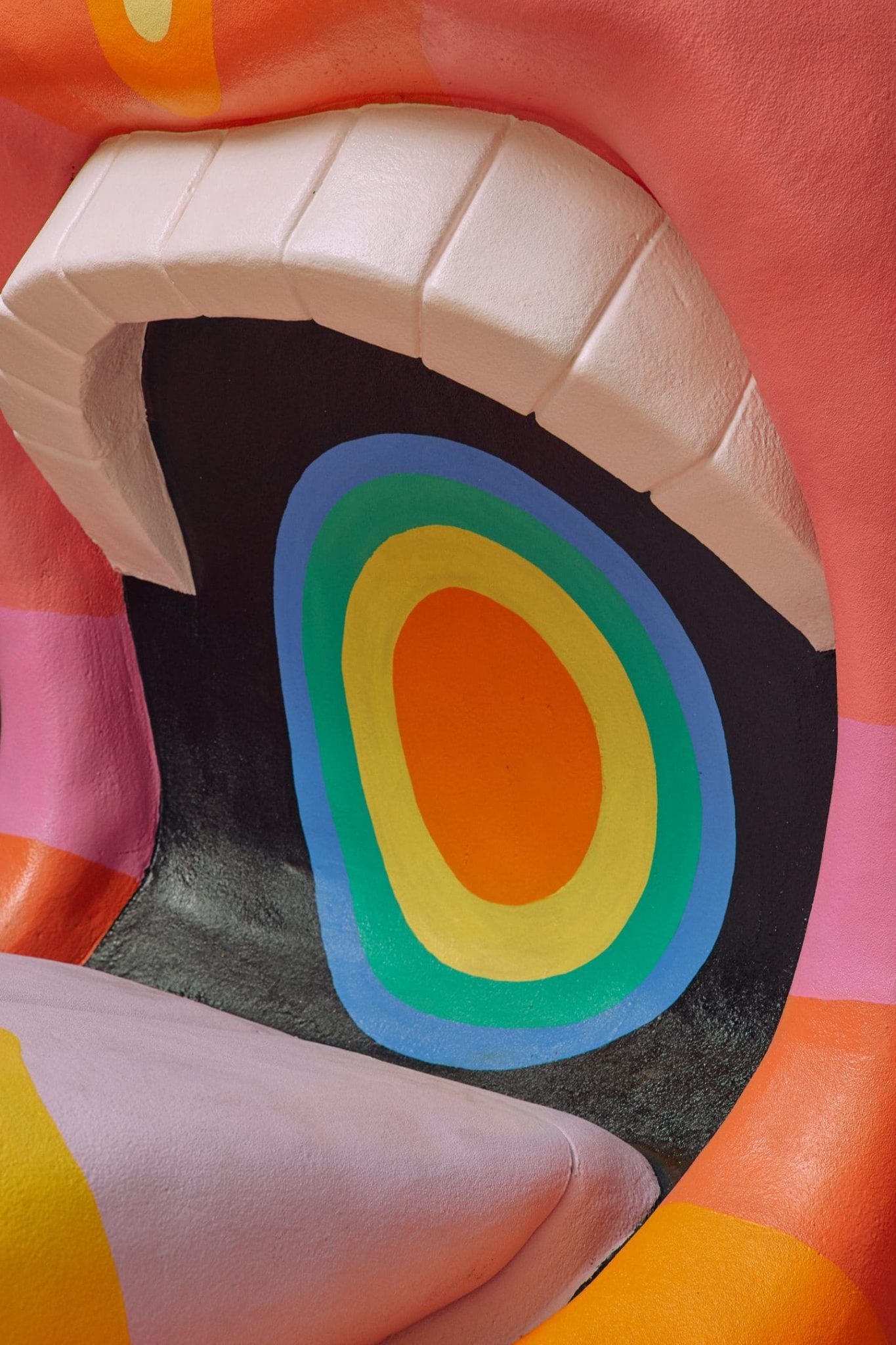
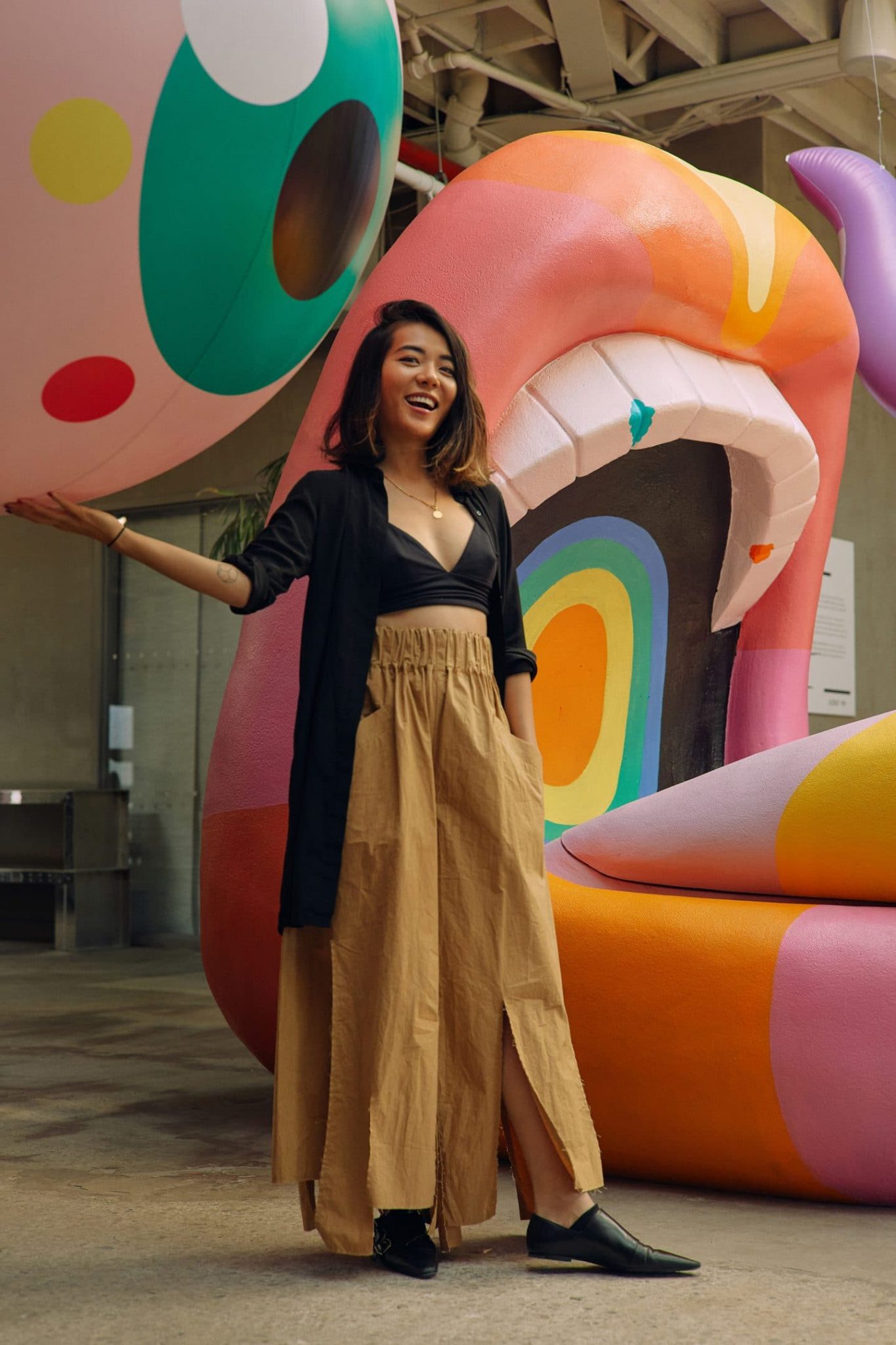
Shawna X at opening night.
“I believe that I can’t fully embrace myself unless I start intercepting, recognizing and accepting my inner flaws.”
How do you perceive your work and yourself as an artist?
The perception of me as an artist and my work has evolved just as I have as a person. I like to take my work through my personal life, reflections, and learning. Currently I am going deep into understanding my identity as Asian American, a woman, a creative, and product of immigrants. I am also understanding how I exist in an objective realm. I psychoanalyze everything from my childhood, family, and relationships, to how my upbringing affects my view on society, race, technology, and the creative process. I would say that my work has been steering towards my perception and analysis of sociology, with a subjective focus on my culture and my identity.
What was the catalyst behind F*** Your Manners?
I started conceptualizing a show back in January when I wanted to host a Lunar New Year’s 2.0 event to empower a ‘new’ Asian American identity. While conceptualizing the show, I started to realize that I had my own personal demons, insecurities, and shame that blocked me from fully accepting myself and celebrating my identity. I began analyzing my thoughts and reactions, especially those regarding my parents. It wasn’t until recently that I realized I still felt deep guilt and shame that surrounded my relationship with myself and my family.
Coincidentally, while I was doing this personal deep-diving, I was planning for my parents to meet my partner’s parents for the first time. I felt very anxious about them meeting—not about them not getting along, but about my embarrassment over my parents’ differences and how others perceived them. This embarrassment stemmed from their mannerisms at restaurants or in front of my friends—I was hyper-aware of how foreign they seemed and afraid that it might expose my own foreignness. Meanwhile, I was ashamed that I was still ashamed. This show was catalyzed by that anxiety and confusion.
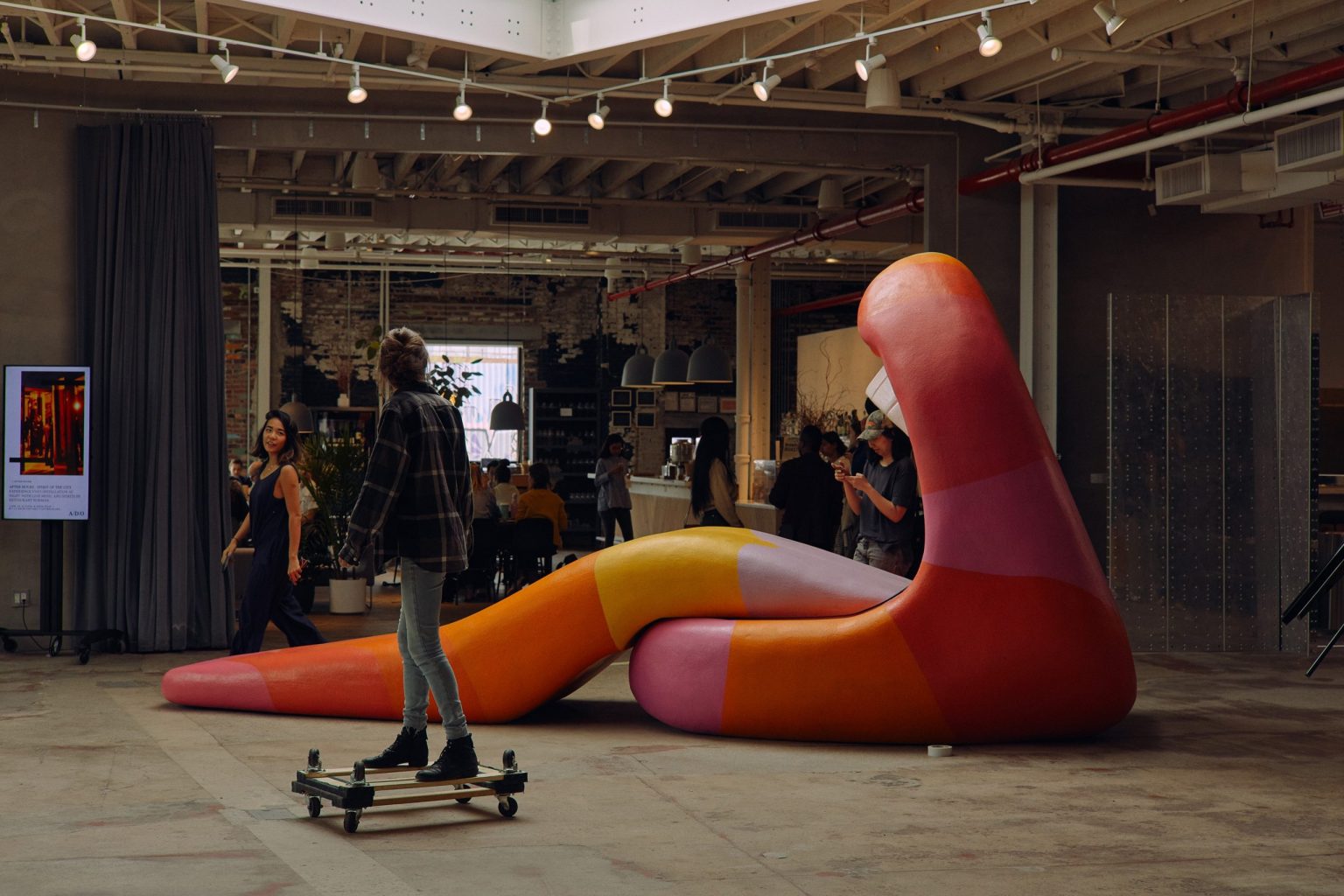
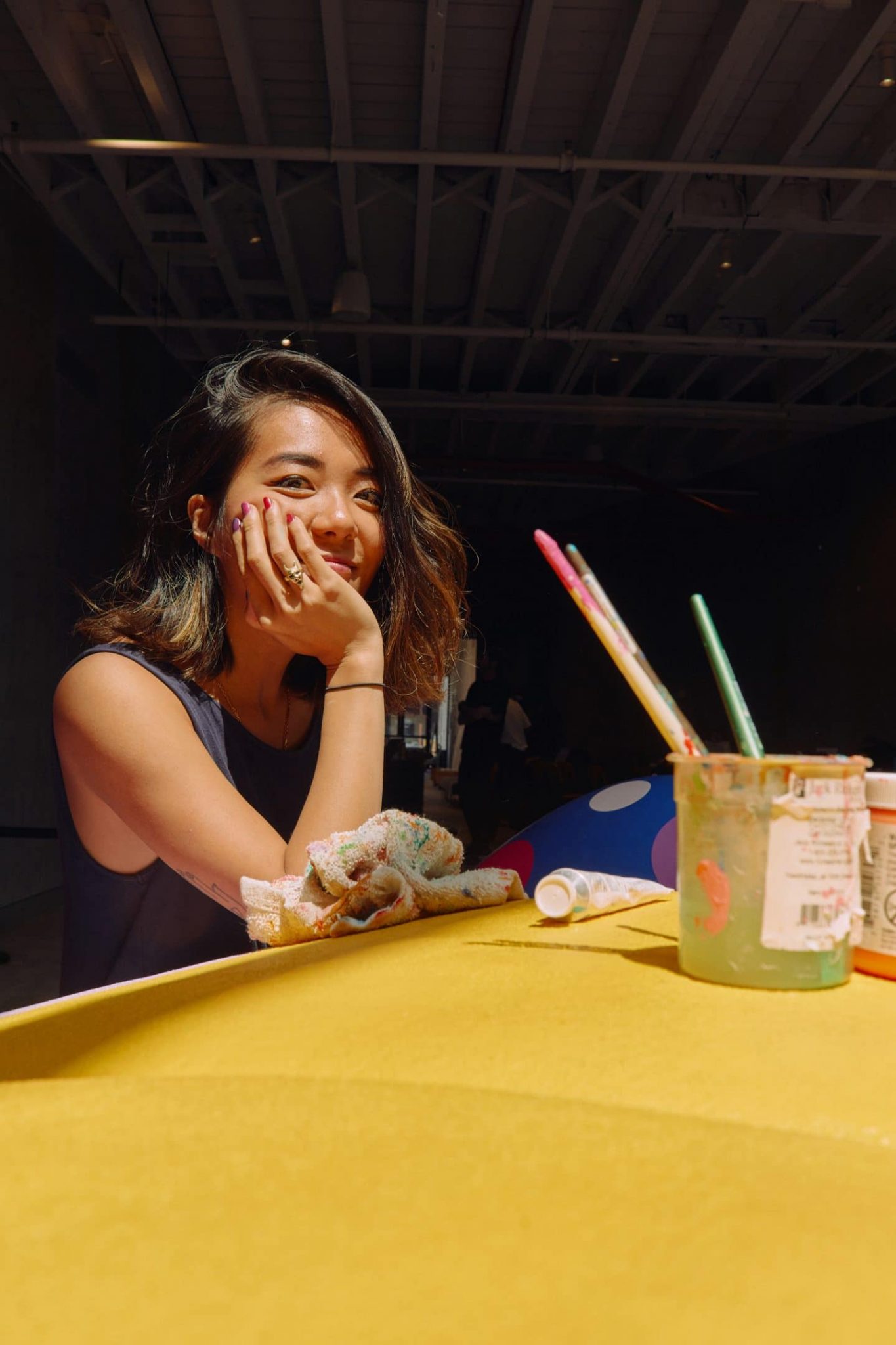

How similar is the final concept of this show to your original idea?
The concept of this show evolved from wanting to celebrate my heritage at face value, to analyzing what went into that empowerment through understanding my insecurities. I believe that I can’t fully embrace myself unless I start intercepting, recognizing and accepting my inner flaws. This show helped me with not only discerning my internalized shame, but also why I had such a negative attachment towards my parents and upbringing. My introspection made me aware that my parents are intrinsically tied to my perception of myself, my culture, and my identity.
Through creating work for F*** Your Manners, did you get to the root of why you felt embarrassed by the way your parents eat?
Creating work for F*** Your Manners definitely got me to some of the root of my embarrassment. I believe that I developed self-hating at a young age. First and foremost, as an Asian American growing up in the homogeneously white city of Portland, Oregon, I wanted to assimilate. I wanted to be cool. I wanted to be accepted—but I physically and culturally couldn’t. I grew up witnessing animosity towards the Chinese culture from the mainstream media. For example: “Made in China” products are shitty, Chinese restaurants are unsanitary, and Chinese tourists don’t know how to behave. What concerned me wasn’t the validity or invalidity of these statements, but that this was the only way my culture was represented. Throughout my childhood I’d even hear these negative sentiments coming from other Asian Americans, the group of people I identified with. It made me not want to identify with being Chinese, and I started to blame my parents. As I internalized this negativity, I started nitpicking at everything about them, down to their eating manners. Ultimately, it’s not their eating manners I was embarrassed by, it was my own identity. Everyone blames their parents at some point of their lives, but ultimately resolves it; however, I never looked for the root of the decay and my shame stayed still.
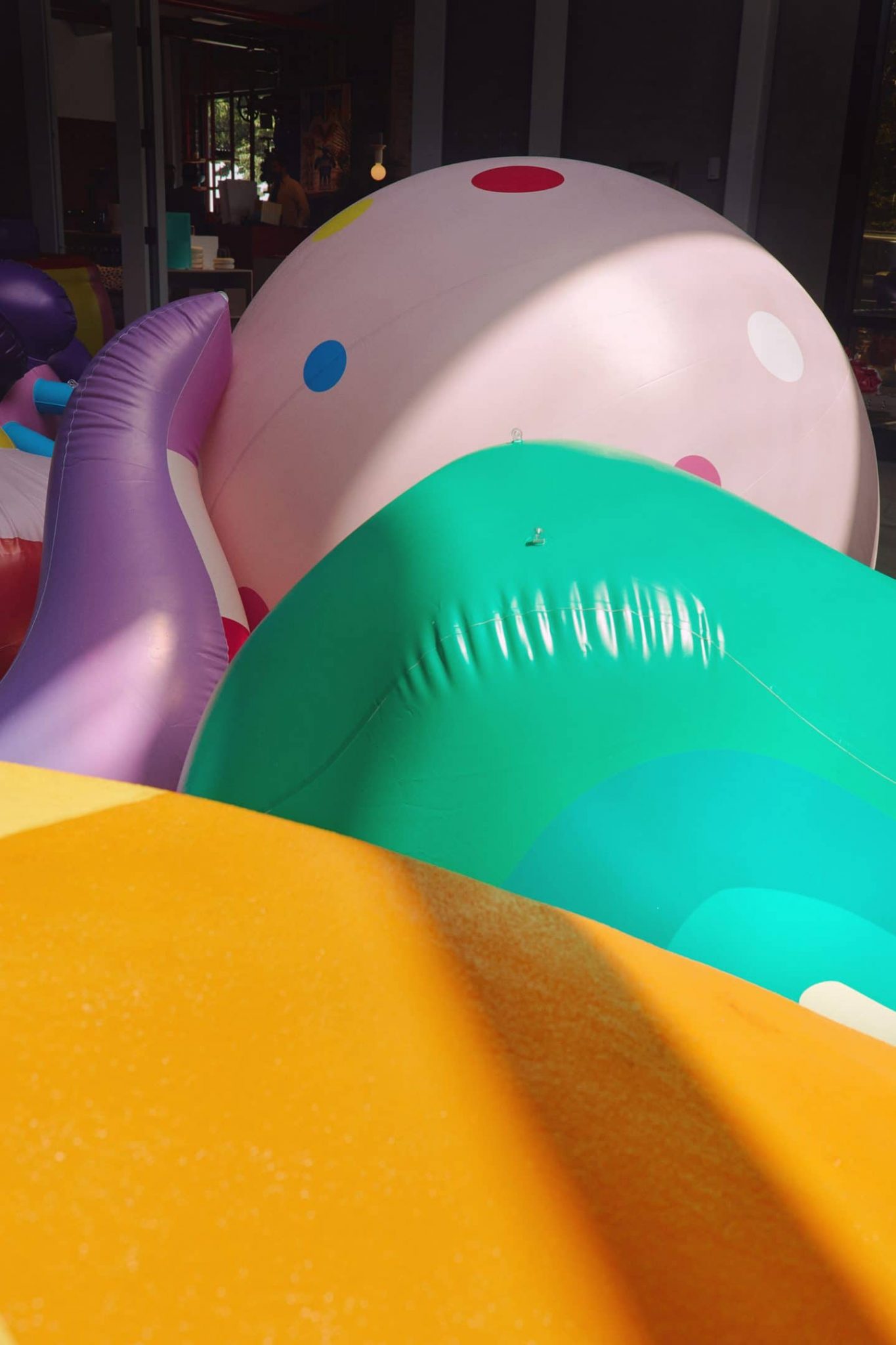
Inflatable food stuffs ready for hanging.
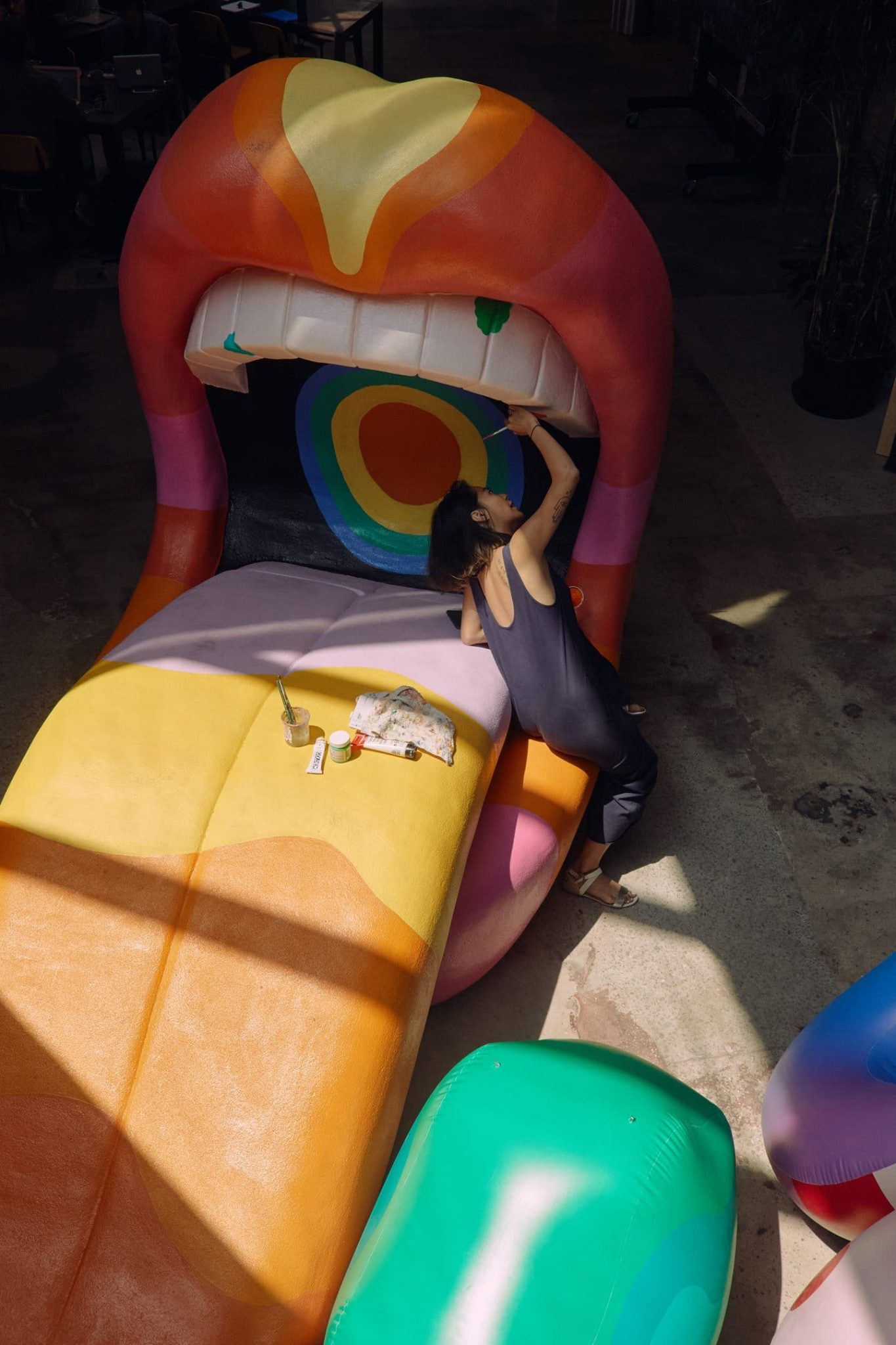
Shawna X making finishing touches.
“I want viewers, regardless of their backgrounds, to consider their own internalized biases and if it’s affecting their seeking of a deeper purpose. ”
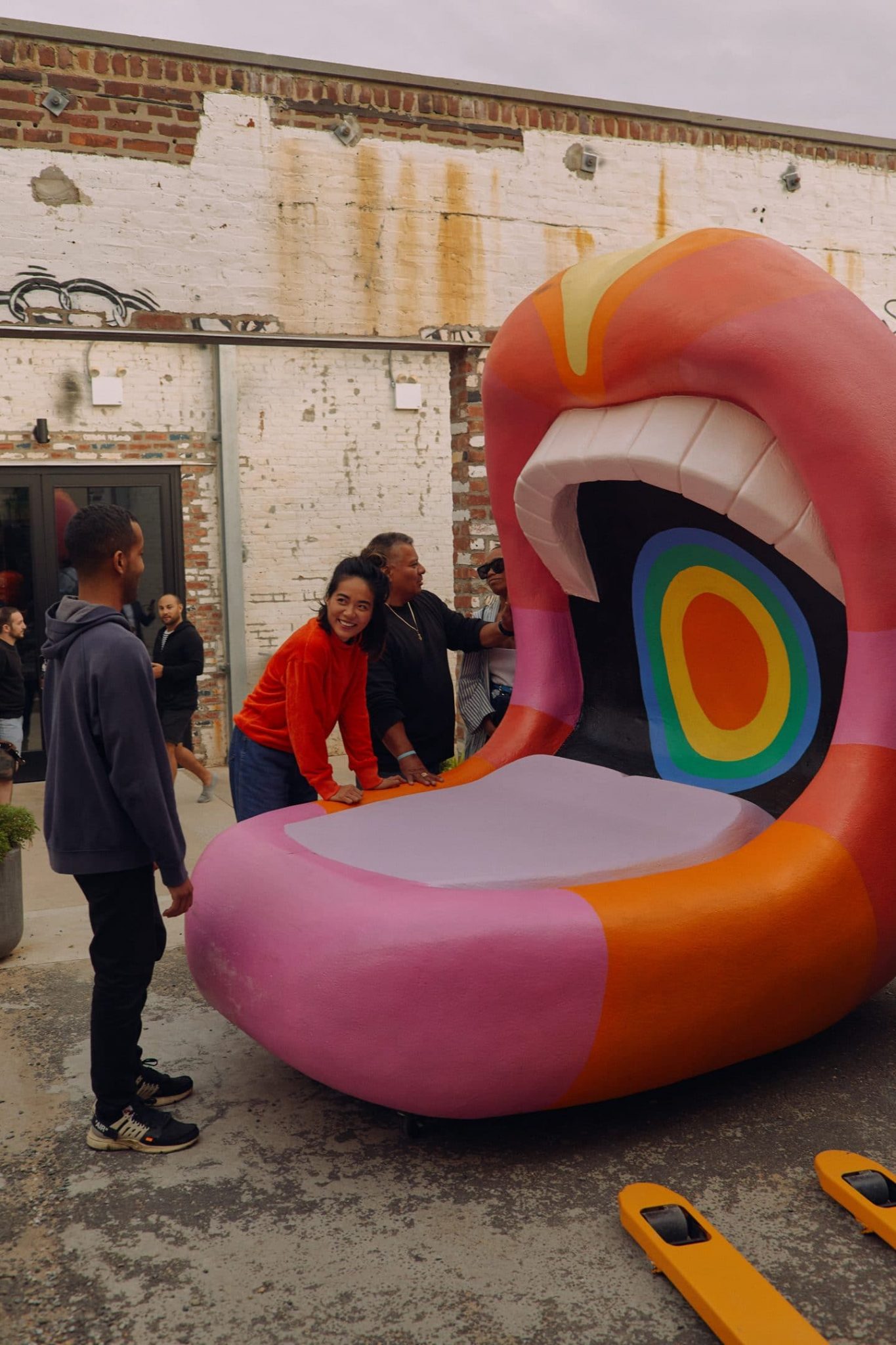
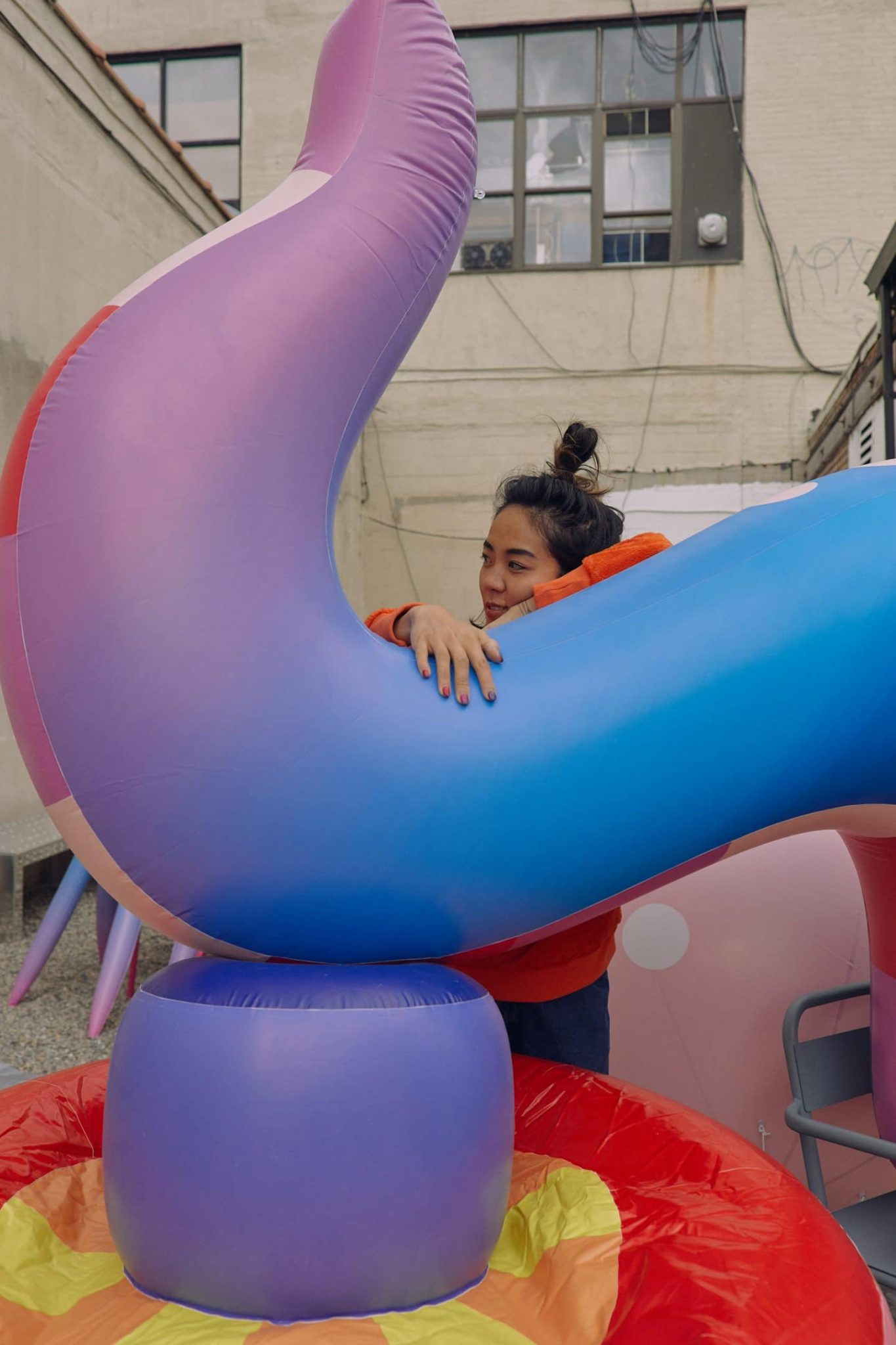
What do you want viewers to walk away thinking? What would you like to challenge viewers to think and do?
The exhibition uses mixed media and inflatable sculptures, accompanied by a series of mukbang videos. My work tends to be pretty colorful, but this installation is especially so. It’s playful, loud, fantastical. I wanted to create the experience of a playground since connecting to your inner child is part of self-love. The lightheartedness of this was my own therapeutic process to tackle something serious and deeply analytical.
Part of empowerment is seeing a vital part of you in the world, so my first goal is for my viewers, especially my Asian American viewers, to recognize themselves in some way, whether it’s in the food motifs, the mukbang videos, or in the general concept. Even talking about this subject has brought up a lot of other voices from others relating to feeling this type of embarrassment or who are recognizing internalized reactions. I want viewers, regardless of their backgrounds, to consider their own internalized biases and if it’s affecting their seeking of a deeper purpose. As serious as the subject is, I wanted to process and showcase my findings light-heartedly, because both tones are important to the story, and art is meant to provide varying perspectives.
How have your own thoughts on diversity evolved?
My thoughts on diversity are continuously evolving. Before, I looked at diversity at a generic, surface level—by our physical differences, then grouping it all in a lump. I also see brands benefiting from “diversity” without any real action. “Diversity” is now a commodity. To me, diversity is not just strictly about ethnicity and culture, but also deeply ingrained in economic and social class. I appreciate the distinctions created by our differences, altered by culture, history, media and white hegemonic culture. The more I read or listen to the struggles of people who are physically disabled, and/or people who are racially, sexually, economically marginalized, the more I start drawing distinctions and seeing similarities within groups of people, noticing thought patterns, and recognizing that nothing is black or white. Humans are complex; it’s time to sit and listen, have conversations, and have space for all voices to exist. Though I definitely don’t agree with everything, I will always root for kindness, for us to go deeper within and with each other, and watch out and listen to the voices of the oppressed.
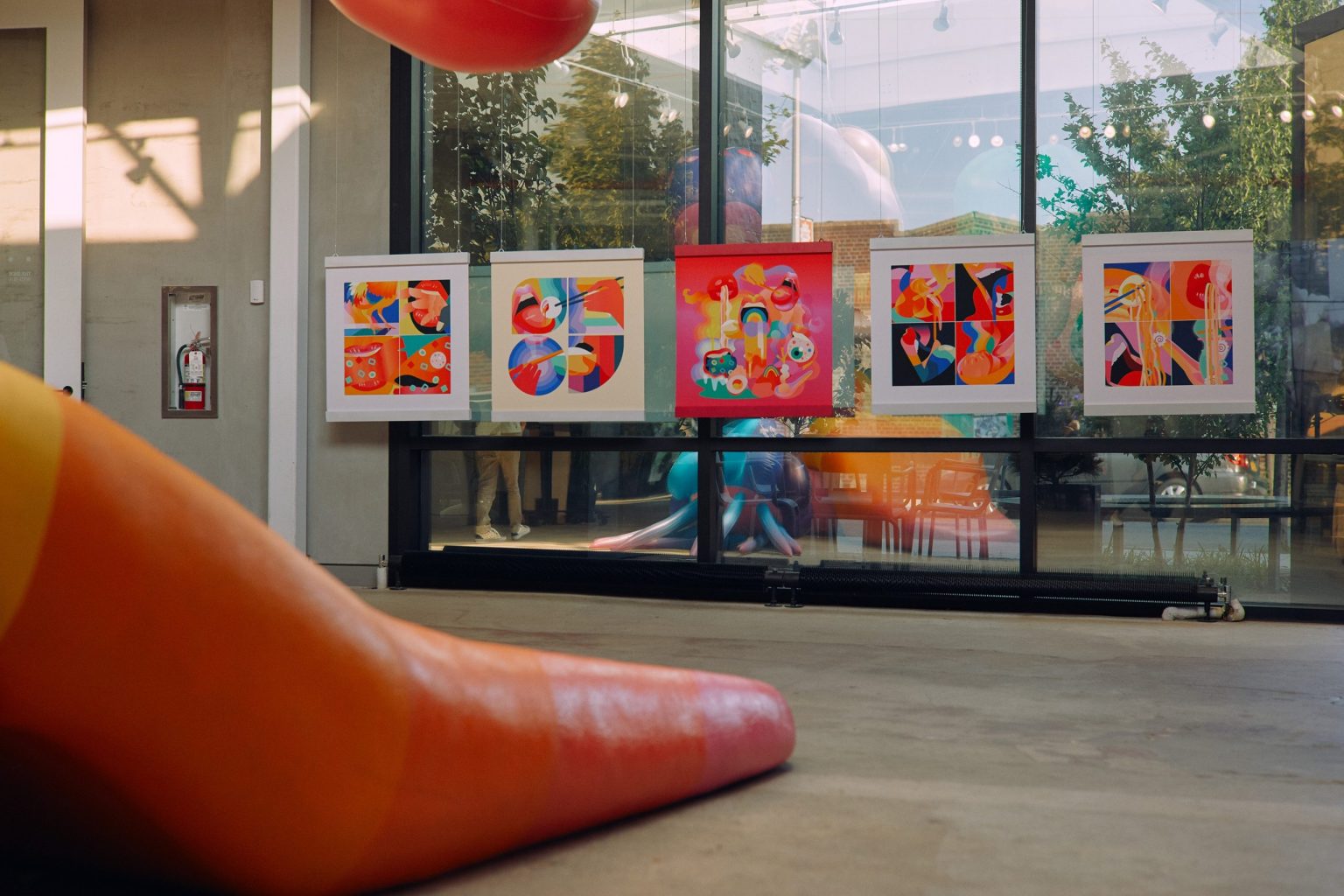
Why is this the right time for your show F*** Your Manners as opposed to any other time?
It’s a good time for any sort of conversation on identity and diversity whether it’s a conversation on shame, acceptance, or a conversation about each other. In New York, or at least in my bubble, these open dialogues about our individuality are constant. Optimistically, I hope we are being heard by others who are opening their vantage points and who want and need to hear other views. Our voices, especially as Asian Americans, have been quiet for the most part, are particularly important right now. I think we need to start looking for our own platform to talk about our experiences and, more importantly, to be able to relate to one another and raise each other up. I want to start looking at society as more community oriented. My goal is for us to be supportive of each other the best way we can, by listening and expressing.
Your work frequently challenges common societal perceptions and assumptions. How do you continue to seek out what you as individual believe in and stick with it in the face of the crush of societal pressure to adapt?
I seek out my individuality by talking and listening, both by being engaged and also being detached. My challenge is to seek out perspectives other than my own; meanwhile, also critiquing what I’m absorbing. I think that’s the best way for my own beliefs to take shape, having flexibility with myself and others, watching how these beliefs change in flux throughout societal and personal changes, and adhering to values and where I’ve laid foundations. It’s interesting to ride with culture, but also looking at it as an outsider, deciphering what culture is saying and hiding at the same time. As artists and creators, our responsibility is to be able to identify the voice of ourselves in society.
What was your experience like while creating the work for this show? How is the work you’ve created for this show different from what you created before?
This work is definitely different than my past work in many ways. Not only is the physical outcome different, but the subjectivity of the content. While I always love talking about the human psyche and sociology in terms of identity, culture, and sexuality, this specific exhibition was way more personal and subjective. This guilt I have is personal, but hopefully it can speak to others on a larger platform. My hope is that the viewer draws their own conclusions. In addition to that, playing and working in the sculptural 3D space is something I never really worked with before. Thinking about design and art in terms of how it feels and looks in a space, and how a person can walk around it and touch it has been a really interesting experience as well. For me, any time I do a big personal exhibition I like to challenge my comfort zone. This show is what that manifested in.
See more of Shawna X’s work, follow her process on Instagram, and visit the exhibition at A/D/O.






























